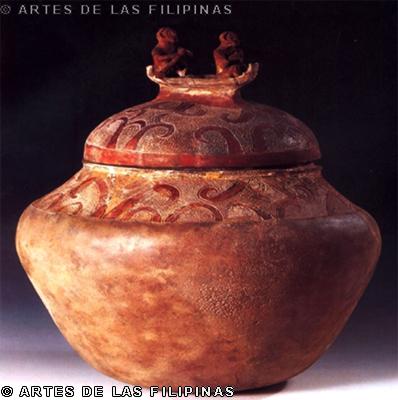Pre-conquest Philippines

A quiz to test if student has learned key concepts for the topic Pre-Conquest Philippines.
- 1.
The living traditions of pre-conquest Philippines tell us that our ancestors lived harmoniously with nature. Explain through an example of examples.
- 2.
Islam was brought by Arab missionaries to the Philippines. When was this?
- A.
14th-15th century
- B.
Neolithic age
- C.
1, 000 years ago
- D.
After the coming of the Spaniards
Correct Answer
A. 14th-15th centuryExplanation
learning goal: to emphasize the Islamic element in the pre-colonial periodRate this question:
-
- 3.
What is the significance of the Laguna Copperplate Inscription?
- A.
Edge of history has been pushed back 621 years
- B.
Gives the Philippines evidence of link with with Southeast Asian kingdoms
- C.
It is evidence of the possibility that Hindus were in Manila before the Muslims
- D.
All of the above
- E.
None of the above
- F.
First choice only
Correct Answer
D. All of the aboveExplanation
The significance of the Laguna Copperplate Inscription is that it pushes back the edge of history by 621 years, providing valuable evidence of the link between the Philippines and Southeast Asian kingdoms. Additionally, it suggests the possibility that Hindus were present in Manila before the arrival of Muslims. Therefore, the correct answer is "all of the above."Rate this question:
-
- 4.
1. This word refers to the Maranao design, which means to carve
- A.
Sarimanok
- B.
Ukkil/okir
- C.
Pako rabang
- D.
Naga
Correct Answer
B. Ukkil/okirExplanation
The correct answer is ukkil/okir. Ukkil/okir refers to the Maranao design which means to carve. It is a term used to describe the intricate and detailed patterns that are carved or engraved onto various objects such as wood, metal, or even textiles. These designs are often inspired by nature, animals, and geometric shapes, and are a significant part of Maranao culture and art.Rate this question:
-
- 5.
What do you call the abaca cloth woven through a difficult tie-die process among the t'bolis?
- A.
G'mayaw
- B.
T'nalak
- C.
Abel
- D.
Banig
Correct Answer
B. T'nalak -
- 6.
- A.
Manunggul
- B.
Bulol
- C.
Maitum
- D.
Naga
Correct Answer
A. Manunggul -
- 7.
- A.
Manunggul
- B.
Maitum
- C.
Bulol
- D.
Sarimanok
Correct Answer
C. Bulol -
- 8.
The manunggul and balangay share what motif that is pervasive in Southeast Asia?
- A.
Migration
- B.
Sculpture
- C.
Agriculture
- D.
Water
Correct Answer
D. WaterExplanation
The correct answer is water. The manunggul and balangay are both examples of artifacts from Southeast Asia that depict water motifs. The manunggul jar, a burial jar from the Philippines, features a boat motif that symbolizes the journey of the soul to the afterlife, often associated with bodies of water. The balangay, on the other hand, is an ancient boat used for trade and transportation in Southeast Asia, highlighting the importance of water as a means of travel and livelihood in the region. Therefore, water is a pervasive motif in these artifacts.Rate this question:
-
- 9.
What do the manunggul, Maitum, the sunduk and mummification have in common?
- A.
They are found all over the Philippines
- B.
They bear the human figure
- C.
They are all sculptures
- D.
They are examples of funerary traditions
Correct Answer
D. They are examples of funerary traditionsExplanation
The manunggul, Maitum, the sunduk, and mummification are all examples of funerary traditions. Funerary traditions refer to the customs and practices associated with burial and honoring the dead. In this case, all of these examples are related to burial practices in the Philippines. The manunggul and Maitum are ancient burial jars adorned with intricate human figures, while the sunduk is a traditional wooden coffin used by the Tausug people. Mummification, on the other hand, is the preservation of the body after death, often associated with rituals and beliefs about the afterlife.Rate this question:
-
Quiz Review Timeline +
Our quizzes are rigorously reviewed, monitored and continuously updated by our expert board to maintain accuracy, relevance, and timeliness.
-
Current Version
-
Mar 22, 2023Quiz Edited by
ProProfs Editorial Team -
Sep 16, 2013Quiz Created by
Datuinfmv




